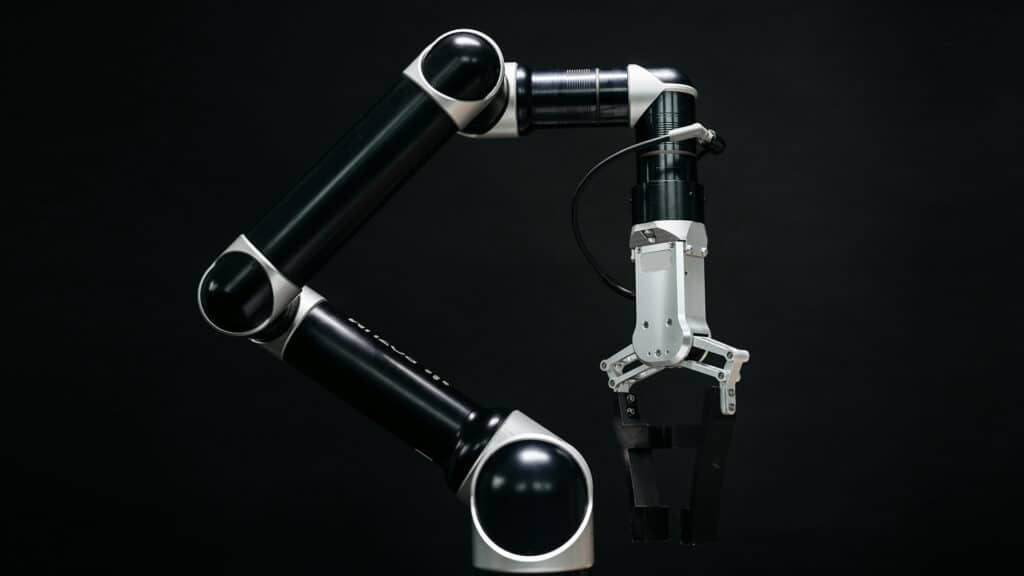Analyst(s): Keith Kirkpatrick
Publication Date: March 28, 2025
Enterprise organizations leverage Smartsheet to improve operational visibility, automate reporting, and reduce project delivery timelines. Customer use cases from Bayer, FOX Sports, Sutherland, ADP, and Toshiba showcase measurable time, cost, and resource optimization.
What is Covered in this Article:
- Bayer consolidated 1,500 projects and saved over 20,000 man-hours using real-time dashboards.
- Sutherland achieved $1 million in annual savings and cut project setup time from 45 minutes to 10 seconds.
- ADP standardized tracking for 200+ projects, improving reporting speed and reducing manual presentation work.
- FOX Sports centralized 60+ projects across offices and automated procurement and capital planning processes.
- Toshiba improved project delivery and commercialization timelines with a 25% gain in execution efficiency.
The News: Large enterprises are using Smartsheet’s platform to replace disconnected tools and manual reporting with standardized, automated project management solutions. Recent customer stories from companies across sectors—including life sciences, retail, media, and professional services—demonstrate how structured workflows and real-time dashboards are driving execution improvements.
Organizations such as Bayer, FOX Sports, Sutherland, ADP, and Toshiba Global Commerce Solutions report quantifiable efficiency gains, ranging from reduced manual labor to improved executive decision-making, enhanced team coordination, and faster time to market.
Smartsheet Supports Efficiency and Visibility Gains Across Enterprise Operations
Analyst Take: Smartsheet’s deployment across large enterprises demonstrates a consistent shift toward structured, scalable project management. These implementations reflect how standardized systems, combined with automation and real-time visibility, can drive tangible improvements in operational efficiency, executive oversight, and cross-team coordination.
From an industry perspective, Futurum Intelligence’s research with 895 enterprise application decision-makers found that 42% of respondents used between 5 and 9 applications to manage projects, while 23.7% used between 10 and 14 applications.
Figure 1: The Number of Distinct Applications Used to Manage Projects

Using a large number of applications to manage projects can introduce unnecessary complexity and inefficiency and impact the depth of visibility into a project. This can negatively impact the overall project timing and success. As such, organizations are trying to standardize on a single project management software approach. According to Futurum Intelligence’s survey of 895 IT enterprise application decision-makers, 32.5% of respondents indicated they have shifted to a single application for project management, which often includes project-wide dashboards, reporting functionality, and automation features.
Real-Time Dashboards Strengthen Executive Decision-Making
Several organizations highlighted improved oversight through dynamic dashboards that replaced fragmented reports and static presentations.
- Bayer rolled out real-time dashboards across 1,500 projects, enabling immediate access to project health, timelines, and risks by department.
- Toshiba’s portfolio-level views gave business leaders a snapshot of 40+ initiatives, reducing delays in issue detection and response.
- ADP’s dashboards helped project managers and executives access real-time project data—budgets, milestones, and escalations—via automated quick links.
Automation Drives Process Efficiency and Reduces Time Burden
Many organizations have also turned to Smartsheet automation to streamline recurring tasks and reduce administrative overhead.
- FOX Sports replaced fragmented tools and manual communication across 60+ logistics projects with automated alerts for procurement, design reviews, and task deadlines – cutting email volume and response delays.
- ADP eliminated the need for slide-based project updates, saving 2–3 hours per project manager weekly, which allowed teams to absorb additional client work without scaling headcount.
- Sutherland reduced project setup time from 45 minutes to 10 seconds through automated provisioning, while approval and status workflows helped drive ~$129,000 in annual setup savings and $1 mn in broader efficiencies.
- Toshiba automated project intake and Control Center blueprint provisioning, giving teams a unified entry point for execution. These automation gains collectively reduced friction in day-to-day operations and redirected team bandwidth toward execution.
Scalable Deployment Supports Cross-Functional and Global Adoption
Once core workflows were streamlined, enterprises expanded Smartsheet usage across departments and geographies to drive consistency at scale.
- ADP managed 200+ active projects across its commercial and national accounts teams, with each initiative customized using Control Center toolkits to match team-specific requirements.
- Sutherland broadened deployment beyond project management to include HR, Talent Acquisition, Service Excellence, and external client access via restricted licenses – enabling seamless collaboration through shared dashboards and workspaces.
- FOX Sports extended its implementation from Los Angeles and Charlotte to the Big Ten Network in Chicago, onboarding 18 new projects within weeks using the same Smartsheet structure. This level of scalability allowed organizations to maintain control and standardization while adapting to varied operational needs – ensuring that process improvements translated into enterprise-wide performance gains.
What to Watch:
- Successful scaling depends on sustained adoption across diverse teams, especially when workflows span internal and external stakeholders.
- Time savings and automation gains may plateau without continuously refining templates, workflows, and reporting frameworks.
- Executive buy-in will remain a key driver for broader rollout, particularly in use cases requiring standardized risk, compliance, or resource planning views.
- Scaling adoption beyond project management functions may reveal gaps in Smartsheet’s suitability for specialized use cases.
See the complete set of customer success stories demonstrating Smartsheet’s impact across industries on the Smartsheet website.
Disclosure: The Futurum Group is a research and advisory firm that engages or has engaged in research, analysis, and advisory services with many technology companies, including those mentioned in this article. The author does not hold any equity positions with any company mentioned in this article.
Analysis and opinions expressed herein are specific to the analyst individually and data and other information that might have been provided for validation, not those of The Futurum Group as a whole.
Other insights from The Futurum Group:
Blackstone and Vista Complete $8.4 Billion Smartsheet Takeover: What’s Next?
Smartsheet’s 2024 Product Design: Elevating UX to Meet Modern Business Needs
Smartsheet’s Collections to Improve Workspace Collaboration and Security
Author Information
Keith Kirkpatrick is Research Director, Enterprise Software & Digital Workflows for The Futurum Group. Keith has over 25 years of experience in research, marketing, and consulting-based fields.
He has authored in-depth reports and market forecast studies covering artificial intelligence, biometrics, data analytics, robotics, high performance computing, and quantum computing, with a specific focus on the use of these technologies within large enterprise organizations and SMBs. He has also established strong working relationships with the international technology vendor community and is a frequent speaker at industry conferences and events.
In his career as a financial and technology journalist he has written for national and trade publications, including BusinessWeek, CNBC.com, Investment Dealers’ Digest, The Red Herring, The Communications of the ACM, and Mobile Computing & Communications, among others.
He is a member of the Association of Independent Information Professionals (AIIP).
Keith holds dual Bachelor of Arts degrees in Magazine Journalism and Sociology from Syracuse University.





